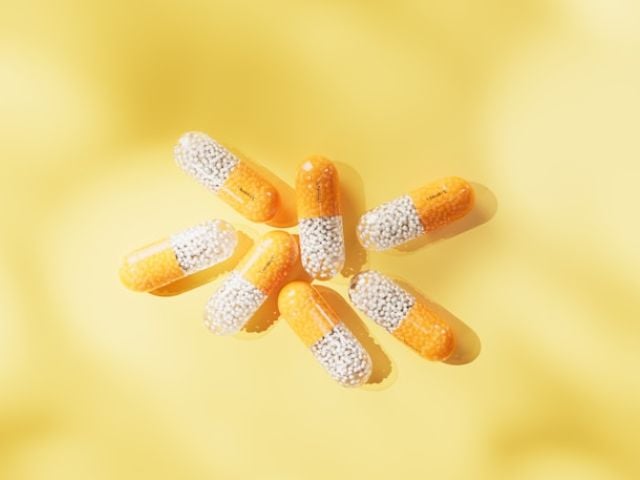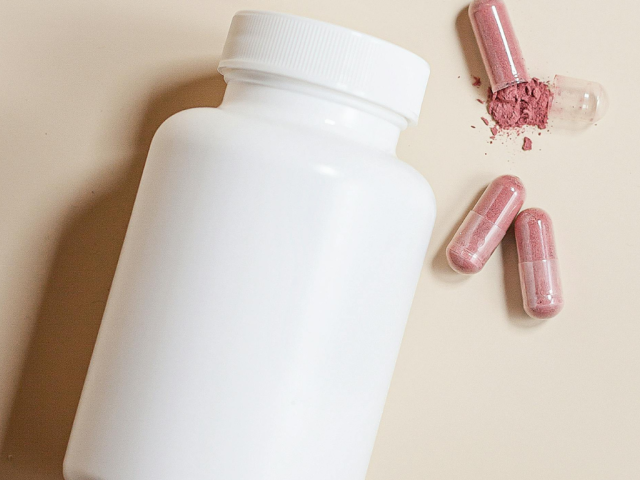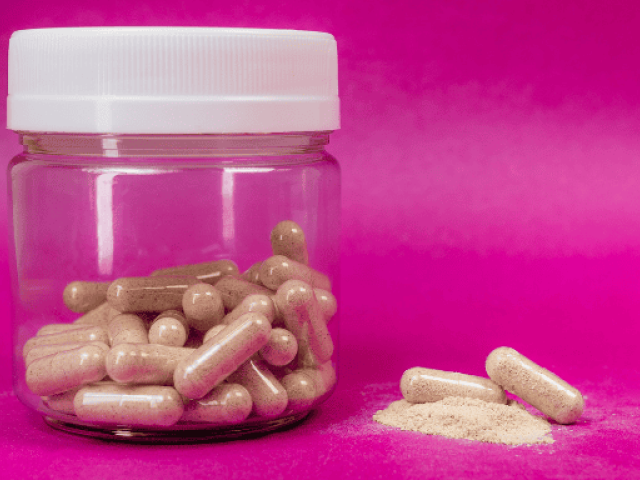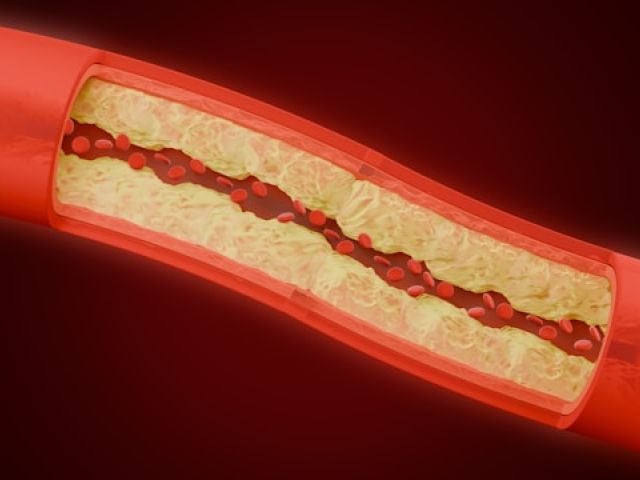
How Turmeric May Help with Neuropathy and Nerve Pain
If you’re dealing with nerve pain, you’ve probably seen turmeric mentioned as a natural option. This golden spice has been used for thousands of years in traditional medicine, and modern science is now revealing why it might help with neuropathy.
The active compound in turmeric, called curcumin, targets the biological processes that drive nerve pain at its source. Clinical trials show real benefits but early intervention matters most. How you take it makes a big difference.
Key Takeaways
- Clinical trials show curcumin reduced neuropathy risk by 30.6 percentage points in 141 patients.
- The active compound in turmeric calms neuroinflammation, fights oxidative damage, and supports nerve cell energy production.
- Bioavailability matters: turmeric with black pepper and healthy fats absorbs better than most isolated supplements.
- Safe doses in human trials were 3 mg/kg twice daily, with over 94% of patients completing treatment without serious side effects.
Understanding Turmeric and Curcumin
Turmeric comes from the root of the Curcuma longa plant. The bright yellow color comes from curcumin, which is also the therapeutic compound researchers study.
But there’s a catch. Curcumin makes up only 3% of turmeric root by weight. This explains why sprinkling curry powder on your dinner probably won’t provide therapeutic doses.
Your body also processes curcumin quickly. Most of it gets broken down before reaching your bloodstream. This is where choosing a high quality turmeric supplement becomes important.
How Curcumin Alleviates Nerve Pain
Curcumin doesn’t just mask pain like over-the-counter medications. It addresses what’s happening inside your nerve cells.
Reducing Inflammation in Nerves
Your nerves hurt partly because they’re inflamed. Think of inflammation as your immune system overreacting to damage.
Research shows curcumin blocks two specific inflammatory pathways1. It stops the NALP1 inflammasome from forming and prevents the JAK2-STAT3 cascade from activating in your nerve support cells (called astrocytes).
What does this mean? Curcumin turns down your body’s inflammatory response at two control points instead of one.
Dr. Shailendra Kapoor, MD, explains the mechanism: “Curcumin has a mitigating effect on diabetic neuropathic pain. This is clearly evident since it inhibits TNF-α, thereby ameliorating thermal hyperalgesia when co-administered with insulin.” He further notes that curcumin has “a dose dependent attenuating effect on the release of nitric oxide, which further decreases the strength of the nociceptive stimuli.”
People with chronic oxidative stress often experience worse nerve symptoms. Curcumin helps break that cycle by targeting these inflammatory pathways.
Protecting Nerve Cells
Your nerve cells need energy to function properly. That energy comes from tiny structures called mitochondria (the power plants of your cells).
Studies reveal that curcumin improves how these mitochondria work in your spinal cord and brain regions that process pain2. When mitochondria malfunction, they leak harmful molecules called reactive oxygen species.
This creates a vicious cycle:
- Damaged mitochondria produce harmful molecules
- These molecules damage more cell structures
- Nerve signals become distorted
- Pain increases
Curcumin helps protect your mitochondria and reduces those harmful molecules.
Improving Nerve Conduction
Pain isn’t the only problem with neuropathy. Your nerves may stop transmitting signals properly.
Clinical testing shows that curcumin can improve nerve conduction velocity (how fast signals travel through your nerves)3. This means potential recovery of function, not just less pain.
Nerve conduction studies measure both motor nerves (which control movement) and sensory nerves (which sense touch, temperature, and pain). Curcumin improved both types.
What the Research Shows
Human studies provide the most reliable information about whether curcumin actually helps people with neuropathy.
Clinical Trial Results
The most compelling trial involved children receiving chemotherapy. Chemotherapy often damages nerves as a side effect.
This randomized, double-blind study gave half the patients curcumin and half a placebo3. The outcomes are shown in this table:
| Outcome | Curcumin Group | Placebo Group | Difference |
|---|---|---|---|
| Developed neuropathy | 39.4% | 70.0% | 30.6% reduction (P < 0.001) |
| Motor nerve abnormalities | 10.5% | 19.2% | 8.7% reduction (P = 0.012) |
| Treatment compliance | Over 94% | Similar | High safety profile |
The P values (those numbers in parentheses) show these differences were statistically significant. They likely didn’t happen by chance.
Preclinical Efficacy Data
Animal research lets scientists test specific mechanisms and doses. Rat studies showed dose-dependent pain relief1.
At 60 mg/kg of body weight, curcumin reduced hypersensitivity to touch from day 5 to 7 after nerve injury. At 120 mg/kg, benefits appeared earlier (day 3 to 7).
Diabetic neuropathy models used doses between 50 and 200 mg/kg. These improved both heat sensitivity and mechanical pain thresholds4.
One important finding? Very low doses (12.5 to 25 mg/kg) actually increased pain sensitivity. This underscores why appropriate dosing matters.
The Bioavailability Challenge
Getting curcumin into your bloodstream is trickier than you might think. Your body treats it like a foreign substance to remove quickly.
Absorption Issues
Research confirms that oral curcumin gets absorbed poorly5. Your liver and intestines break it down rapidly.
Even when you absorb it, your body converts it to other forms and flushes it out fast. This is called low bioavailability.
Eating curry once a week probably won’t provide therapeutic levels. Regular consumption of herbs and spices for inflammation supports general health, but targeted relief requires higher, consistent doses.
Enhancing Absorption
You can improve curcumin absorption with a few simple strategies.
- Add black pepper. Piperine (the active compound in black pepper) dramatically increases curcumin bioavailability by slowing down your liver’s breakdown process.
- Eat it with fat. Curcumin dissolves in fat, not water. Taking it with a meal containing olive oil, avocado, or nuts helps absorption.
- Choose powdered over fresh. Powdered turmeric shows better bioavailability than fresh root for therapeutic compounds.
- Consider enhanced formulations. Products like Jinfiniti’s Extra Strength Turmeric+ increase absorption compared to standard curcumin taken on an empty stomach.
The debate over curcumin versus turmeric root partly comes down to these absorption factors.
Comparing to Standard Treatments
You might wonder if curcumin works as well as prescription drugs. Research provides some perspective.
Efficacy Comparisons
Studies show curcumin performed better than vitamin E (α-tocopherol) for reducing symptoms of alcohol-induced neuropathy4.
It matched the antioxidant activity of apocynin, a compound researchers use as a standard in diabetic neuropathy studies.
When added to conventional treatments, curcumin reduced the time patients needed other medications by about 3 weeks6. This suggests it may let you use less of drugs that come with more side effects.
Combination Approaches
Low-dose curcumin combined with other natural compounds often works better than high doses alone. This team approach reduces the risk of side effects from any single compound.
Ginger and turmeric complement each other for inflammatory conditions. Some research looks at combining turmeric with quercetin, another anti-inflammatory plant compound.
Think of it like a team sport. Each player contributes, and together they achieve more than any individual could alone.
Curcumin Dosage for Neuropathic Pain
Translating research doses to your kitchen or medicine cabinet requires some interpretation. Animal studies use different amounts than human trials.
Research-Based Doses
The pediatric trial that showed clear benefits used 3 mg/kg twice daily. For a 70 kg person (about 154 pounds), that equals roughly 420 mg per day total.
This dose proved both safe and effective. Over 94% of patients completed the full treatment course.
Supplement Considerations
If you’re considering curcumin supplementation:
- Begin low and go slow. Start with smaller doses and increase gradually over weeks.
- Take it with food. Choose meals that contain healthy fats for better absorption.
- Add black pepper. Either consume black pepper with your meal or choose a supplement that includes piperine.
- Be patient. Allow at least 4 to 6 weeks to assess whether it’s helping. Nerve healing takes time.
- Track your symptoms. Keep simple notes on pain levels, function, and any side effects.
Quality varies widely between supplement brands. This protects both your health and your budget.
Safety Profile and Side Effects
Curcumin has an excellent safety profile in research studies. That doesn’t mean it’s risk-free for everyone.
General Safety Profile
Clinical trials report minimal adverse effects. In the 141-patient study, over 94% maintained treatment compliance with no serious adverse reactions in the curcumin group3.
Some people experience mild gastrointestinal symptoms. These typically resolve without stopping treatment.
Important Warnings
Certain people should avoid curcumin or use it cautiously:
- Pregnant and breastfeeding women (due to emmenagogue effects)
- People with gallstones or bile duct obstruction
- Those taking anticoagulants (curcumin may increase bleeding risk)
- Individuals on medications metabolized by CYP enzymes
One case report documented sensory neuropathy from vitamin B6 toxicity associated with long-term high-dose turmeric use (1,000 mg daily for 5 years)7. This serves as a reminder that more isn’t always better.
Talk with your healthcare provider before starting any new supplement, especially if you take medications or have health conditions.
Tracking Your Progress
If you try curcumin for neuropathy, measuring results helps you make informed decisions about continuing.
Subjective Measures
Keep a basic journal recording:
- Pain intensity (rate 0 to 10 each day)
- Activities you can or can’t do comfortably
- Sleep quality (how often pain wakes you)
- Mood and energy levels
- Any side effects you notice
Look for patterns over several weeks rather than day to day. Nerve healing happens slowly.
Clinical Testing
Nerve conduction studies provide objective measurements. These tests measure how fast and effectively your nerves transmit electrical signals3.
Your doctor can order tests measuring:
- Motor nerve conduction velocity (nerves controlling movement)
- Sensory nerve conduction velocity (nerves sensing touch and pain)
- Compound muscle action potential amplitudes (strength of nerve signals)
- Overall neuropathy severity scores
These objective measures distinguish between feeling better and actual nerve healing. Not everyone needs repeated testing, but it can help track progress in cases where symptoms are unclear.
What Else Should You Know?
Scientists have discovered some unexpected benefits of curcumin for nerve health beyond basic pain relief.
Timing Matters
Studies suggest curcumin works best when started early in the neuropathy process8. It may prevent chronic neuropathic pain from developing if you begin treatment during early stages.
This preventive effect differs from most pain medications, which only work while you’re taking them.
Gender Independence
Unlike some medications that work differently in men and women, research shows no difference in curcumin effectiveness between sexes for neuropathy treatment3.
Nerve Regeneration
Beyond pain relief, curcumin appears to promote actual nerve fiber regeneration6. Improved nerve conduction velocities and better nerve architecture on microscopic examination suggest genuine healing, not just symptom masking.
Supporting Your Nerve Health
Curcumin works best as part of a broader health strategy. Single interventions rarely solve complex problems.
Lifestyle Factors
Your lifestyle choices directly affect nerve health:
- Blood sugar control is necessary for anyone with diabetes. High blood sugar damages nerves progressively.
- Regular physical activity supports nerve function. Movement increases blood flow to nerves and may stimulate repair processes.
- Quality sleep gives your body time to repair. Nerve regeneration happens primarily during deep sleep stages.
- Stress management reduces inflammatory signals. Chronic stress keeps your inflammation levels elevated.
- Avoid alcohol and smoking. Both directly damage nerve cells and interfere with healing.
- Testing your inflammatory biomarkers can help you and your doctor assess whether your anti-inflammatory strategies are working.
Complementary Approaches
Consider combining turmeric with other supportive approaches:
- Boswellia provides additional anti-inflammatory effects through different mechanisms than curcumin
- Alpha-lipoic acid has research support specifically for diabetic neuropathy. It’s an antioxidant that helps regenerate other antioxidants
- B vitamins support nerve health. Just avoid excessive B6, which can cause neuropathy itself at very high doses
- Physical therapy maintains function and prevents complications from reduced nerve sensation or muscle weakness
- Mind-body techniques like meditation or gentle yoga may help manage the emotional impact of chronic pain
Some people find success with Jinfiniti’s Extra Strength Turmeric+, which combines turmeric with compounds designed for better absorption and inflammation support.
What We Still Don’t Know
Promising research doesn’t mean we have all the answers. Several important questions remain.
Most studies lasted only 3 to 8 weeks. We need longer trials to understand sustained effects and optimal maintenance approaches.
Genetic factors influence how your body metabolizes curcumin. They also affect your susceptibility to neuropathy. Future research might identify who responds best to curcumin treatment.
Different types of neuropathy may respond differently. More studies comparing diabetic neuropathy, chemotherapy-induced neuropathy, and other forms would help guide specific recommendations.
Researchers acknowledge that more clinical trials with improved curcumin formulations are needed before doctors can routinely recommend it alongside standard treatments4.
Quick Review
The research supports curcumin as a useful addition to neuropathy management. Clinical trials show it can reduce neuropathy development by up to 30 percentage points when started early. The compound works by reducing inflammation, protecting nerve cells, and potentially promoting regeneration.
Curcumin shows a strong safety profile in studies. Work with your healthcare provider to determine if it makes sense for your specific situation and how to incorporate it into a comprehensive treatment plan.
Referenced Sources
- https://www.nature.com/articles/srep28956 ↩︎
- https://pmc.ncbi.nlm.nih.gov/articles/PMC10610406/ ↩︎
- https://pmc.ncbi.nlm.nih.gov/articles/PMC11853498/ ↩︎
- https://pmc.ncbi.nlm.nih.gov/articles/PMC8125634/ ↩︎
- https://pmc.ncbi.nlm.nih.gov/articles/PMC3918523/ ↩︎
- https://pmc.ncbi.nlm.nih.gov/articles/PMC7600446/ ↩︎
- https://www.thaijoneuro.com/files/2022/6e226944dbd545da975149501dfb3cae.pdf ↩︎
- https://www.sciencedirect.com/science/article/pii/S0011393X12000999 ↩︎

Get weekly health insights and exclusive offers by joining our newsletter.










